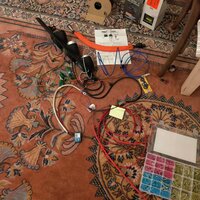I've gone around the block on crimped vs soldered connections. I now crimp almost all of my wire connections. The key is to get the right crimps. I have a set of klein crimpers. They will crimp even cheap, crappy crimp terminals tight enough. The multi crimps (strippers, bare crimps, insulated crimps) don't work worth a damn. The other thing I've noticed with my cheap terminals is that the insulation just gets in the way. More times than not, I pull that plastic shit off the terminal before I crimp it. Even if I don't, I still use the non-insulated crimp side of the pliers...the insulated side just doesn't get them tight enough.
For 90% of my work, I grab the Kleins.
https://www.homedepot.com/p/Klein-Tools-Crimping-and-Cutting-Tool-for-Connectors-1005SEN/100352095
I have a set of hydraulic crimpers for battery cables and other "big" stuff.
https://www.amazon.com/gp/product/B0811VYCQ6/?tag=wranglerorg-20
Then I have some specialty stuff, like panduit crimps and weatherpack crimps.


